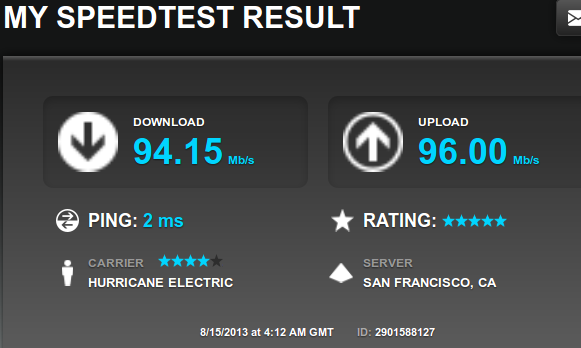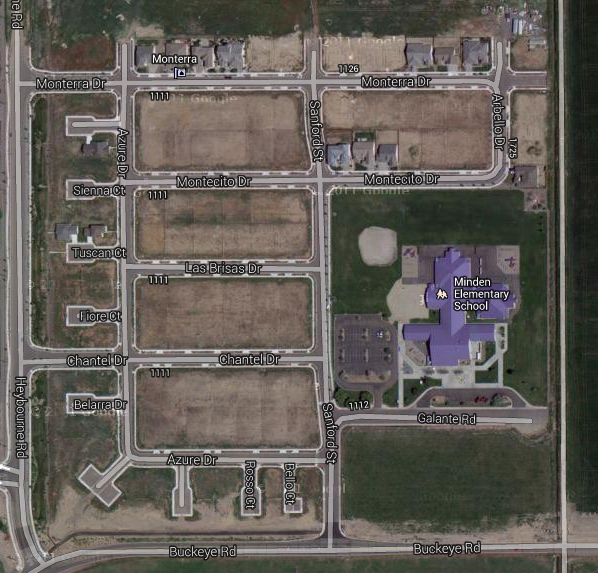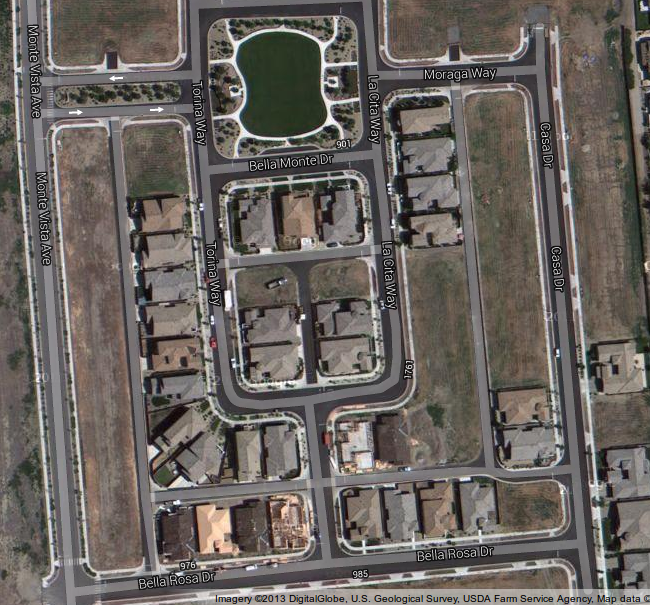So as all 9 readers of my blog know I have been a long time WebOS user. Really it was my first real smart phone back in 2009 the Palm Pre. The first and only Palm branded product I have ever owned (other than Pre accessories – my next WebOS device was post HP acquisition).
RIP WebOS
Anyway as I have written about in the past, for a while after HP killed the hardware I was holding out some degree of hope that the software would find a new home, obviously that hope dwindled as time went on and as of about probably 9-10 months ago I decided to kill off whatever hope that was left in me. The current state of WebOS is quite poor, I felt even while HP owned WebOS – every day that went by it was falling further and further behind, they had some unique technology advantages that still shine today but that wasn’t nearly enough to make up for the shortfalls. HP later sold the WebOS hardware group to LG to make smart TVs (which seemed to debut at CES this month), and more recently HP sold the remaining patents that they had involving Palm and WebOS to Qualcomm.
Honestly it was somewhat depressing to see the die hard WebOS fans say on what is probably one of the very few WebOS community sites left. Some held really high hopes of what was to come. It didn’t(and doesn’t make sense to me). The maintainers of the site even stopped posting news articles more than six months ago because there was just nothing to write about (and the six months prior the articles were really scraping the bottom of the barrel for content).
Deciding to jump ship
Around the middle of last year I was getting tired of the software glitches in WebOS that I have endured over the years, knowing they will never be fixed, and Open WebOS is even today little more than a pipe dream (from the comments I’ve read I’d wager it’s at least 2-3 years away from anything usable as a phone and by then it will have even more catching up to do, so really it seems to be a waste of time for anything other than tinkering). I thought about it off and on and decided that the likely candidate replacement was going to be the Samsung Galaxy Note 3, whenever it was going to be released.
Factors going into my decision were I wanted it to be fast, have plenty of storage, have a big enough screen so my big fingers could type on it, and decent battery life. I also wanted it to be Linux friendly as I use Linux on my laptop and desktops. Â The specs of the Note 3 weren’t released at the time so I decided to wait to see what else came about just in case I think I would want something different. Finally the Note 3 was announced and released and had strong reviews across the board.
I saw a bunch of other devices but none of them stood out to me more than the Note 3.
Keep in mind I have never used an Android or IOS device for more than say 5 minutes so my knowledge of either was extremely limited. One thing I did like about the Note 3 was it’s support for 64GB of internal flash in addition to 64GB of MicroSD expansion. So I decided to wait until I could get a 64GB Note3 to have 128GB of local storage, that would be pretty nice. Searching is annoying because so many results come from people mentioning the Note 3 with 64GB of microSD storage..
So I waited, and waited. Looked around a lot, plenty of news sites reporting 64GB was supported but could not find a sign of anyone — not even one person in the world — saying that they had it or knew where to buy it. Even now, doing a very casual search I do not see anyone with a 64GB Note 3.
So December 22nd comes around and I’m at a bar watching a football game, and thinking about going to Best buy across the street to buy it after the game as they were offering it at $199 which is $100 less than anyone else obvious that I saw, and I could walk away with it that day.
So I went and bought the 32GB version, with a 64GB Micro SD card.
First impressions
It’s a big phone for sure, the Pre3 has a 3.58″ screen and the Note 3 has a 5.7″ screen. The Pre3 is a slider phone with a real keyboard so that adds extra heft. In fact the Note 3 is only 13 grams heavier than the Pre3 – a difference I can’t even feel.
Obviously the Pre3 is outclassed in every way:
- I have six times more storage(16GB vs 96GB)
- I have six times more memory(512MB vs 3GB)
- I have quad core 2.3Ghz vs single core 1.4Ghz
- GPU I’m sure is significantly better
- I have 1.7 million more pixels on the screen (800×480 vs 1920×1080)
- I have full LTE support (AFAIK no WebOS device had LTE) – and hey – I’m already paying an extra $40 or $50/mo for 5GB of data with a Mifi data plan, so might as well leverage LTE right?
- Significantly better camera (and camera fuctions)
- I can actually use Bluetooth and 2.4Ghz wifi at the same time (could not do that on the Pre3, would get massive interference on Bluetooth)
- Much bigger battery and I believe much better battery life
- I can have tons of photos without the OS crapping out (several hundred supported in WebOS, so far I have more than 12,000 on my Note 3 and I got plenty of room to grow I think)
I could go on…
Anyway, from an overall user experience perspective I have found making the adjustment from WebOS to Android much easier than I had originally expected. I do like having a plethora of options to play with, that is something WebOS did not have (though out of the box WebOS had a good user experience other than being slow).
Thirty days or so into my purchase there are really only three things I miss from my WebOS days:
- Wireless charging (this is a huge one for me, I had been using wireless charging for the previous four years — I know Note 3 has wireless charging support so I will have that soon)
- Unable to quickly silence notification alarm. Working in operations my phone acts as a pager. I have a very loud, long, and annoying notification message for alerts. The first time that noise went off waking me up at 2AM I about had a heart attack(click the link to listen to it). With my WebOS phones I could just hit the power button and the sound would mute immediately. Not so on this Note 3. I have looked online and this not an uncommon complaint about Android (though some device manufacturers offer this ability). I have seen people requesting this feature going back at least three years. This is quite annoying to not have….
Speaking of which the placement of the power button exactly opposite to that of the volume rocker is not good in my opinion, I find myself pressing the volume button on accident just to press the power button(which I think causes problems for trying to take a screen shot more details on that below). On the WebOS phones the power button is on the top.
- The Note 3 is not smart enough to determine where to put a phone call. On WebOS for example if I have a bluetooth headset paired with the phone, and a call comes in — and I answer the call with the phone (not the headset) the call is placed on the phone. On the Note 3 (also noticed this on my last “feature” phone) if a headset is paired(and connected) the call always goes to the headset. I’ve had several occasions where people have hung up on me with me saying hello???? not realizing that the call had been sent to the headset. So I have to answer the call, and wait a second(to see if the headset is paired, since they auto pair when in range often times) then hit the headset button to transfer the call back to the phone if I am not in immediate reaching range of one of my many bluetooth headsets. That process takes a good 3-5 seconds where the caller is left in limbo.
None of them are deal breakers of course, overall the experience is positive, and I’m glad I made the switch. I could go on for quite a while with the issues I have had with WebOS over the years but that’s all in the past now. I still use my WebOS tablets, though these days the browser is so old and decrepit that I really only use them for about 4 different web sites(in all cases I disable javascript to get passable performance). They do still make great digital picture frames (as long as you have less than say 1,000 images). They also are good video playback devices with good audio (though the headset volume is really low, too low to use on an airplane to watch video).
On the Note 3 I really like the stylus (or S-Pen as they call it). I use it tons of times throughout the day. It’s really good for precision. It’s also the only way I’ve been able to take a screen shot in Android. I’ve found a few websites that have upwards of a half dozen ways to take a screen shot and none of them work for me(I think my timing in pressing the buttons is not perfect, but it shouldn’t have to be). But the S-pen has a function that I just click on and it works every time. The S-pen has a bunch of other functions that for the most part I haven’t used yet.
The camera is quite good as well it has so many features (the Pre3 camera had literally one feature – the flash – on/off/auto). I took a couple panoramic shots on my recent holiday road trip. One thing I liked about the Pre3 camera was it was fast. You press the button and instantly you have a picture – the Note 3 at least in auto mode (again haven’t messed with it much) you press the button and it tries to focus and then take the picture. You can do burst mode and take tons of pictures (whereas with Pre3 you have to keep hitting the button but it is fast! – though focus isn’t always right).
Battery life isn’t quite as good as I was expecting given the rave reviews I have seen since the Note 3 was released. It can be confusing, I could watch a 45 minute video and the battery will drop 4-5%, or I could play a game for 10-15 minutes and the battery drops 8-10%. I have been so used to wireless charging and just having my phone charge constantly I find myself plugging and unplugging my Note 3 a half dozen or more times a day just to keep the battery up(I’m obviously worried about the durability of the micro USB connector). I haven’t had it drop much below 50%. I’m sure it could go a full day with typical use, but I just don’t like seeing it below 70-80% if I’m close to a charger.
My Pre3 on a regular day probably spent 60% or more of the day/night sitting on a charger. The Note 3 will do the same once I get wireless charging hooked up. Though it’s going to cost a bit of $ – maybe $250 or so to get enough good charging stations and the charging backplate. Sort of surprised the price of wireless charging hasn’t really moved much in the past four years..
I don’t have any protective cover or case on the phone. I don’t plan to get any, I treat my electronics with a good amount of care.
I do miss the USB drive mode of the WebOS devices though, just plug it in to any computer and it turns into a USB drive (though all phone functions are off during this). With the Note 3 it uses that strange media standard and at least at the moment I can only connect it to a windows computer to copy files onto it (and it doesn’t get a drive letter either). It works fine from within VMware workstation though. I can of course copy files other ways like through Owncloud or something, but it’s not as efficient if I want to copy several hundred files at once. Windows in VMware works though so I use that when I need that function.
Apps/Games I use
I kept hearing about how awesome the apps are and stuff.. My needs are pretty basic. I have a bunch of apps installed, but I have found that for the most part very few of them get used. Really I think the only application that is not included on the phone that I fire up more than once a day is Firefox. I use the built-in email client for work email, as well as the built in SMS client for text messages.
Other 3rd party apps I use on a semi regular basis
- Nova launcher – I use this alternative launcher all the time, works very well.
- Oceans HD live wallpaper – looks really nice
- F-stop image gallery (seems to be pretty good, I like the dynamic albums it provides, I split my pictures up into portrait and landscape albums so I can get maximum viewing pixels without having to constantly flip the phone back and forth as I view the images)
- MX Player (video player) works quite well too
- Skype – roughly 80% of all work communications go through skype
Yet more 3rd apps I use on a less regular basis
- K-9 Mail (used for personal email, when not traveling I fire it up maybe a couple times a week) – I use the built in email client for my work email(Exchange). Most of the time I just read personal email from a regular laptop or desktop in a webmail client.
- Owncloud (access my colo server file storage)
Speaking of Owncloud, I am using DAVdroid (and the workaround) to sync contacts between the phone and my owncloud server, that is handy. I don’t like the idea of sharing contacts with google or other service providers. The last time I stored contacts on exchange I forgot to take them off before I nuked my exchange account(when leaving the company) and I lost all of them so I decided that was not a good idea to try again. WebOS had a Synergy feature where it could integrate with the likes of LinkedIn directly to your contacts (and it had no ad tracking or anything it was pretty basic but it worked). I will not install the LinkedIn app for Android, too invasive.
As for games, I installed a few first person shooters and a Mech RTS game, I played the FPS games for about 2 minutes and haven’t touched them since(sort of afraid my thumb is going to go through the screen with them). The Mech RTS game (MechCom) was pretty fun, though haven’t touched it in about 3 weeks.
I have been playing the Simpsons Tapped out and Megapolis quite a bit, they are entertaining. Though I’d like to see a real Sim City game for Android(if there is one I haven’t seen it). I poked around for a bunch of other apps/games but didn’t see much that interested me. One thing I do note however is it seems like the Google play store could use a lot more categories, with so many apps/games it seems difficult to find something just by browsing around.
I have made sure to limit the apps based on the permissions, there are tons of apps out there that just want too many permissions and I won’t take ’em. There’s been quite a bit of talk about improving the permissions system of Android I do hope more work is done in that area especially being able to provide “fake” information to apps that are asking for too much. The phone came with the app (I think it came with it I might of downloaded it though) called Lookout Labs Ad Network Detector. Not sure how good it is but it scans all the apps and shows what the major categories of ad networks and what they do and what installed apps are using them. For me there are only 3 Ad Networks detected (Admob, Tapjoy and Millennial) and they don’t collect a whole lot of info. Certainly I reject anything that wants to touch contacts, or take pictures, or send/read SMS, collect personal information etc..
I have a bunch more apps and some more games installed but they’ve all gotten minimal usage at this point.
Work related apps
One thing I could never do on the Pre3 was really anything work related outside of e-mail. Not a problem anymore.
- Dell SonicWall VPN – while my main VPN is Citrix Access Gateway, there is no mobile app for that, I have Sonicwalls as well though(mainly used for site to site VPN). There is an Android (and IOS) app for them and it works quite well on Android.
- Citrix XenApp Reciever – we have a very small XenApp server for operations purposes (some windows management software packages etc). This package(especially with the S-Pen for precision) works quite well on Android. I can fire up vCenter, or the 3PAR GUI tools(I don’t use them much), or Firefox most recently I fired up Firefox to reconfigure our production load balancers(Citrix Netscaler) from my phone a few weeks ago. Being that the load balancers use Java applets those would not run directly on the phone(I don’t think anyway).
- iVMControl – vSphere interface though not very useful to me. Waaaay too slow to use over a 3-5,000 mile WAN connection. Much faster/easier/better to use XenApp and the regular vCenter client.
- Microsoft Remote Desktop – haven’t used this app yet, may not use it unless I have problems with XenApp, but it’s there.
- HP Storefront mobile access – interesting little app that grants me read only access into my 3PAR arrays. I don’t need to login to them very often, but it’s there if I need to view an alert or something.
- HP Support – access to HP support cases. Only used it once to see what it did.
- iLO Console – access to iLO I guess, doesn’t seem too useful, I suppose if I want to access the console(can’t remember the last time I had to do that), it doesn’t seem to have an Android experience to access iLO functions for that it relies on the iLO web interface which I can otherwise just load in Firefox once I am on VPN.
I suppose the biggest thing I have NOT setup yet is SSH. I have a couple SSH clients installed but have not gone through setting them up with my keys(or generating new keys). None of my systems accept password authentication for SSH. I was never able to SSH from my Palm phones so this is nothing new to me.
I have also not setup OpenVPN so I can VPN to my colo server. I have an OpenVPN client but it wants a config file in a special format that I haven’t spent the time to figure out how to do yet. I did for a brief time have a command line OpenVPN client on my HP Touchpad but long since lost it. There were no Citrix, or Sonicwall or GUI OpenVPN clients that I was aware of for WebOS anyway.
GPS Navigation on Android
The first time I used mobile GPS navigation was back in I think it was 2001 with my Handspring Visor and a GPS Springboard expansion module along with a PalmOS GPS navigation app. It was fun, things have evolved a crazy amount since then.
Over the holidays I went on another road trip – covering just over 2,500 miles driving to Orange County, then to Tuscon, then to the Phoenix area and back home to the bay area. I was in my own car so I used the Kenwood/Garmin Stereo/Navigation system that I had installed just after I bought the car rather than the phone.
(thought this post could use some color so added the pic)
I did use the phone on a few occasions to find things, but did not use it for navigation itself. One thing I pretty quickly saw was lacking on the Android apps that at least I was using (which were Mapquest and Google maps) were two key functions that I frequently use on my car navigation:
- Find places along my route (bonus points if you can limit the distance from the route, my car’s nav system has some sort of default limit that is not adjustable)
- Find places near my destination
Neither Google maps nor Mapquest seemed to have a similar function, which is too bad. I’m sure you can do something similar with either perhaps just by zooming out along the route and searching, but that seems like more trouble than it should be.
I installed a bunch of other travel/road/traffic condition apps but I never used any of them on my trip (or since for that matter — road conditions were fine anyway). My car nav system does not have any traffic info.
I’m going on another trip in March to Atlanta(to visit my company’s colo for the first time in over two years), and probably will go to either Seattle or Washington DC as part of that trip, so I will certainly need navigation there as I don’t know the area. At this point I’ve decided to take along a TomTom I bought a while back to do Navigation on that trip rather than rely on the phone. I used it on my last trip to DC and it worked well, I have a stand for it and it sits well on the dashboard etc. It also has the two functions above that I use quite frequently (though last time I was in DC the TomTom spent 30 minutes trying to convince me to go on a highway that was shut down for construction, that was frustrating …)
I know there is a TomTom app for Android but after reading up on it I think for now I’ll stick to the stand alone unit.
Conclusion
Overall I am very satisfied with the user experience and capabilities of my new Android phone. There is not much I miss from WebOS. I find the size & weight of the Note 3 to be very reasonable(more so than I was expecting). It performs well, and really gives me an order of magnitude more flexibility from a mobile perspective than I ever had on WebOS. I still do sort of wish I could of gotten a 64GB Note3, but it’s not a huge deal, next time I guess!
I just ordered a Braven 710 bluetooth speaker (mainly for my upcoming trip), and that will likely be my first experience using NFC.
I guess that is enough writing for now.



